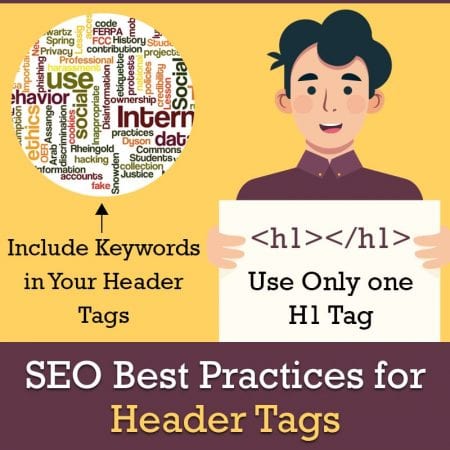 In the past header tags were a critical part of SEO but not anymore. This doesn’t mean they’re unimportant though. Indirectly they’re able to influence your rankings since they make it easier and more enjoyable for your readers. They also provide keyword-rich content for the search engines themselves. As such, you should still be maintaining their best practices.
In the past header tags were a critical part of SEO but not anymore. This doesn’t mean they’re unimportant though. Indirectly they’re able to influence your rankings since they make it easier and more enjoyable for your readers. They also provide keyword-rich content for the search engines themselves. As such, you should still be maintaining their best practices.
Use Headers for Providing Structure
Header tags offer your article structure and context. This is your opportunity to use headers to tell your readers what information they’ll glean from your text. You should also use H2 to H6 tags to break your main topics down even further.
Use Headers for Breaking up Text
An article that someone can easily scan means that it can easily be read, which is what helps it perform better in the search engines. Forbes goes so far as to say that scannability is content marketing’s most overlooked factor. This is backed up by the fact that only 16% of readers will read an article word-for-word. Such content has also been proven to perform 58% better in the search engines. These articles are also much more likely to be shared, thus gaining your site natural backlinks – another ranking factor.
Include Keywords in Your Header Tags
Google uses headers to understand your page’s content, which is why you should include keywords there. Make sure you do this naturally, without spamming.
Optimize Your Content for Featured Snippets
There are two ways headers make a difference to your SEO when it comes to snippets:
- Optimize your header with <p> tags that can be used in answering the question that’s listed on Google.
- Use small headings to outline different items in a list. Google will use this to create its own list for its snippet results.
Use Only one H1 Tag
Google doesn’t have an issue with websites using multiple H1s. This doesn’t mean you want to use multiple H1s on your page though since they’re so big, they look like titles. Your page will start looking messy with the more H1s you use.
Be Consistent with Your Header Tags
Make sure you maintain a consistent experience for your users (e.g. use title case format on all your pages, not just one; maintain short headers, treating them like titles – 70 characters or less). By using consistent header tags you’ll impress your visitors so much that they’ll happily return and engage with your website repeatedly in the future.
Make Your Headers Interesting
The last SEO best practice tip should apply to all the copywriting that you do for your website and not just to the headers themselves. Make sure the headers in any content that you publish on your website are compelling for your visitors. While they’re there to help make it easier for your visitors to scan through your content, you don’t want them to scan through everything then simply leave without reading any of it. This is where an intriguing header comes in, encouraging them to read what you’ve written underneath the header – especially underneath an H1 which will ultimately determine whether your readers continue to scan or stop to read what you’ve written. Take your time here and write a great H1 tag that shows that you’re addressing their questions so they’ll be excited to read your answers.
Conclusion
You should never ignore any task regarding your website’s SEO. While the task’s impact may seem small, you won’t be wasting your efforts here. If you don’t have time to handle this task yourself, consider leaving the work for the Local SEO Tampa Company to do. They’ll have your paging receiving the traffic it deserves.
